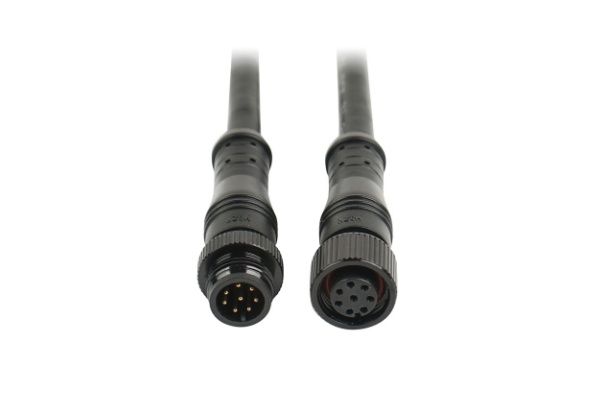News


News

What "Heavy Duty" Really Means in Waterproof Connectors
Release time:2025-08-21
viewed:281
Walk through any industrial supply warehouse and you'll see the term "heavy duty" slapped on everything from extension cords to work gloves. It's become the ultimate marketing buzzword, suggesting little more than "probably better than the cheapest option." But when it comes to heavy duty waterproof electrical connectors, the phrase carries specific engineering weight that separates true industrial-grade components from their standard counterparts.

The difference isn't just about thickness of plastic—it's about survival. A genuine heavy duty waterproof electrical connector is built to serve as the last line of defense in systems where failure means downtime, danger, or major financial loss. Where a standard connector might handle one environmental challenge, a heavy-duty version is designed to fight a war on multiple fronts simultaneously.
1. The Power Behind the Terminals
The most obvious job of any connector is to move electricity, but heavy duty models take this further. They're engineered to maintain stable connections under high current loads that would make cheaper connectors heat up, degrade, and potentially fail. The internal metallic components use superior materials and plating to minimize resistance and prevent oxidation over time. This isn't just about conducting power—it's about doing it safely and efficiently year after year, even as surrounding equipment vibrates and heats up.
2. Locked Down Against Physical Abuse
Industrial environments are brutal places. Connections get knocked, cables get yanked, and equipment gets moved. A plastic push-in connector might survive a calm day in a protected cabinet, but it won't last a week on a factory floor. True heavy duty waterproof electrical connectors solve this with positive locking mechanisms. Bayonet-style couplings that require a quarter-turn to lock or full threaded collars ensure that vibration won't shake connections loose. The internal seals remain perfectly aligned, maintaining their waterproof integrity even when the cable is subjected to constant stress.
3. The Shell Game
That robust feeling when you hold a quality connector isn't an accident—it's the result of material science aimed at specific threats. The housing needs to do more than feel tough; it needs to resist crushing impacts (think a misplaced tool or falling equipment), stand up to years of UV exposure without becoming brittle, and withstand exposure to oils, solvents, and chemicals without breaking down. This multi-material approach creates a shell that protects both the electrical connection inside and the delicate sealing elements that keep moisture out.
4. The Fire Watch
Perhaps the most overlooked aspect of heavy duty design is fire safety. In environments where electrical faults can have catastrophic consequences, the materials matter. Premium heavy duty waterproof electrical connectors carry safety certifications like UL94 V-0, which means the plastic material will self-extinguish within seconds after a flame is removed. This isn't about preventing a fire from starting—it's about containing the damage if something goes terribly wrong elsewhere in the system.
5. The Waterproofing System
Even the waterproofing in heavy duty connectors goes beyond basic protection. Instead of relying on a single O-ring, the best designs use a systematic approach with multiple barriers. Primary seals handle the mating interface, secondary seals protect the cable entry points, and some designs use filled chambers or compression gaskets as additional insurance. This layered approach ensures that even if one element faces extraordinary conditions, the others maintain the barrier against moisture and contaminants.
The reality is simple: when you specify a heavy duty waterproof electrical connectors, you're not just buying a piece of plastic and metal. You're buying insurance against downtime, safety against electrical hazards, and reliability when conditions turn against you. The term "heavy duty" should never be a vague promise—it should be a measurable standard of protection that stands between your equipment and everything that wants to make it fail.